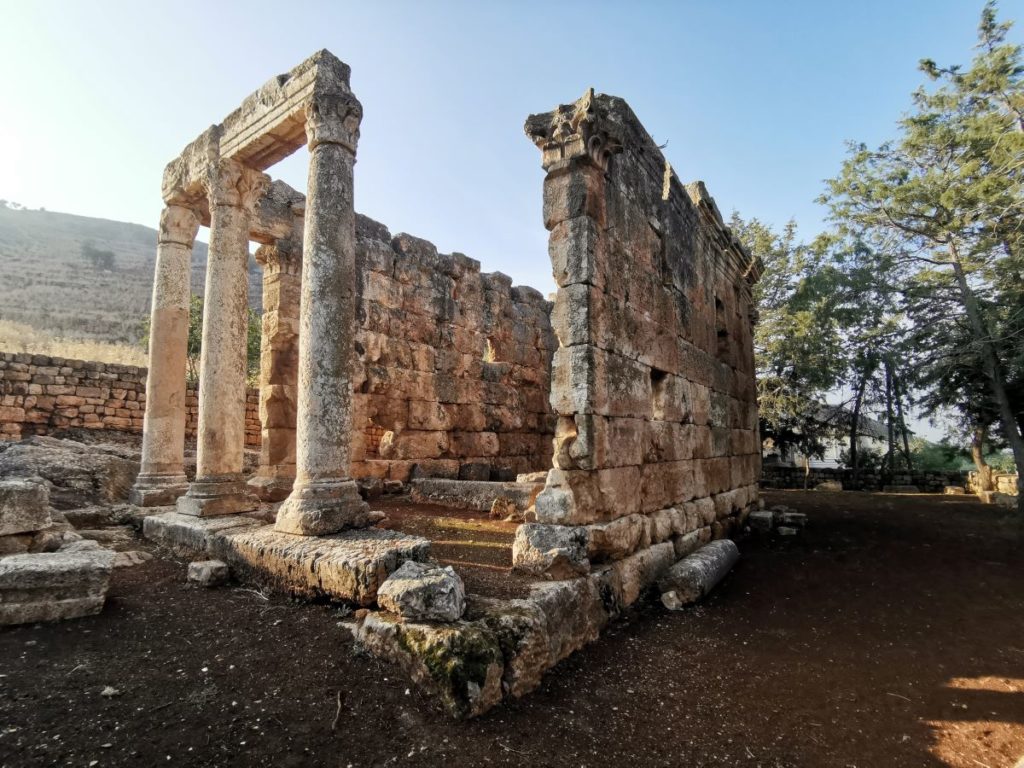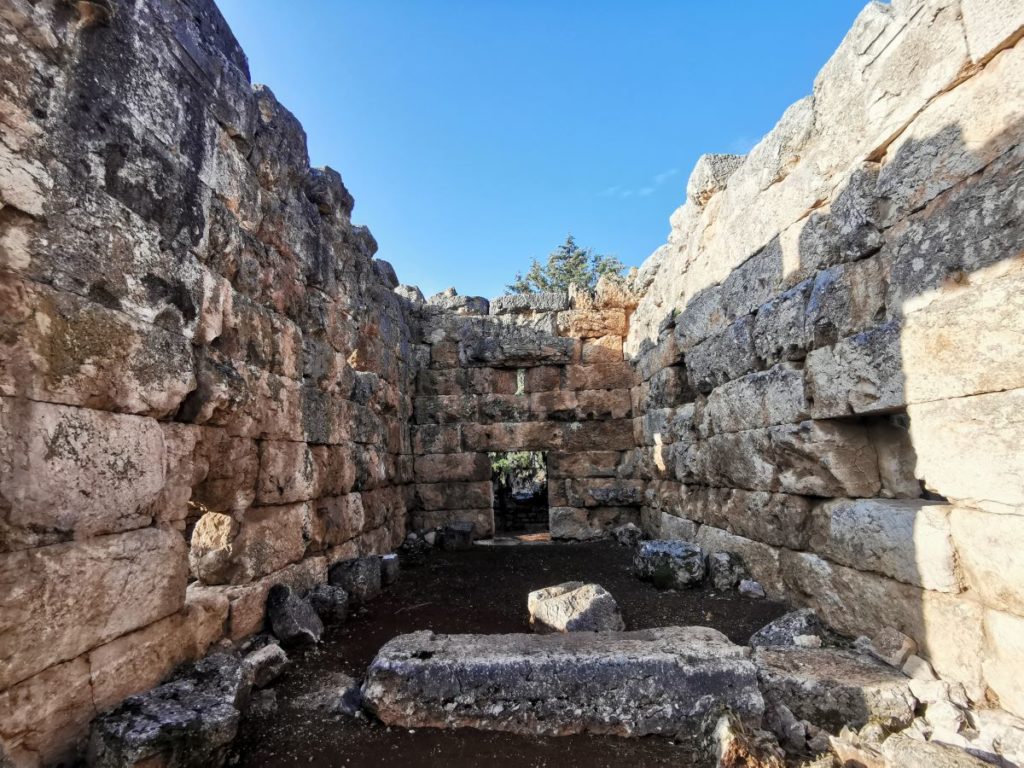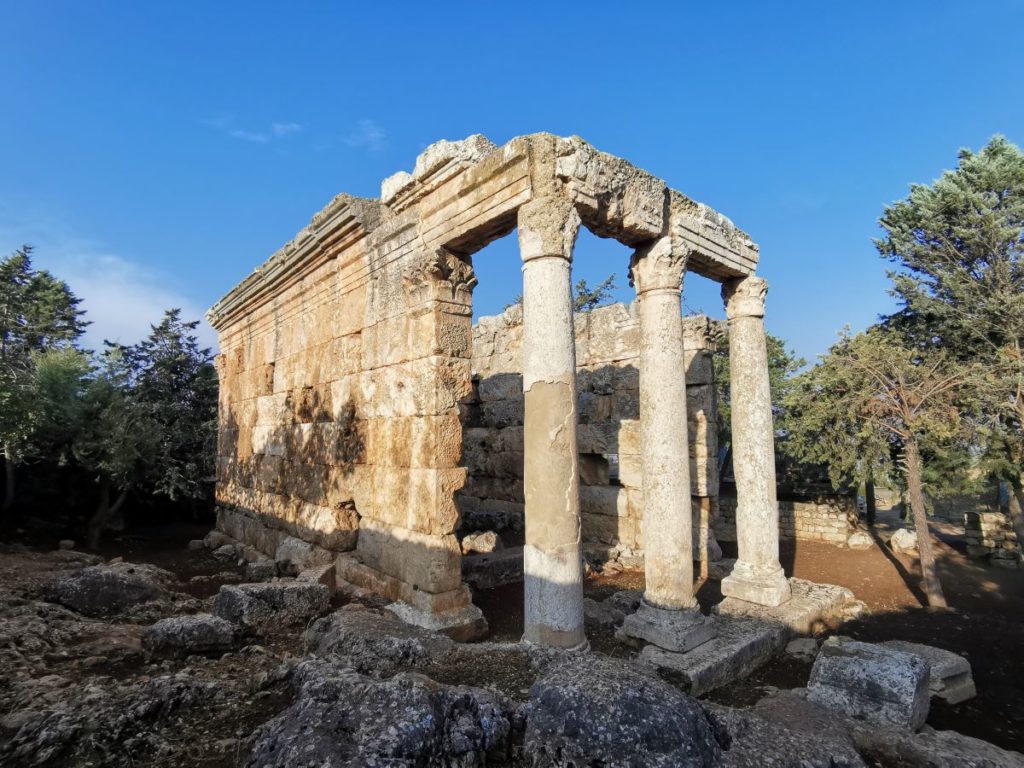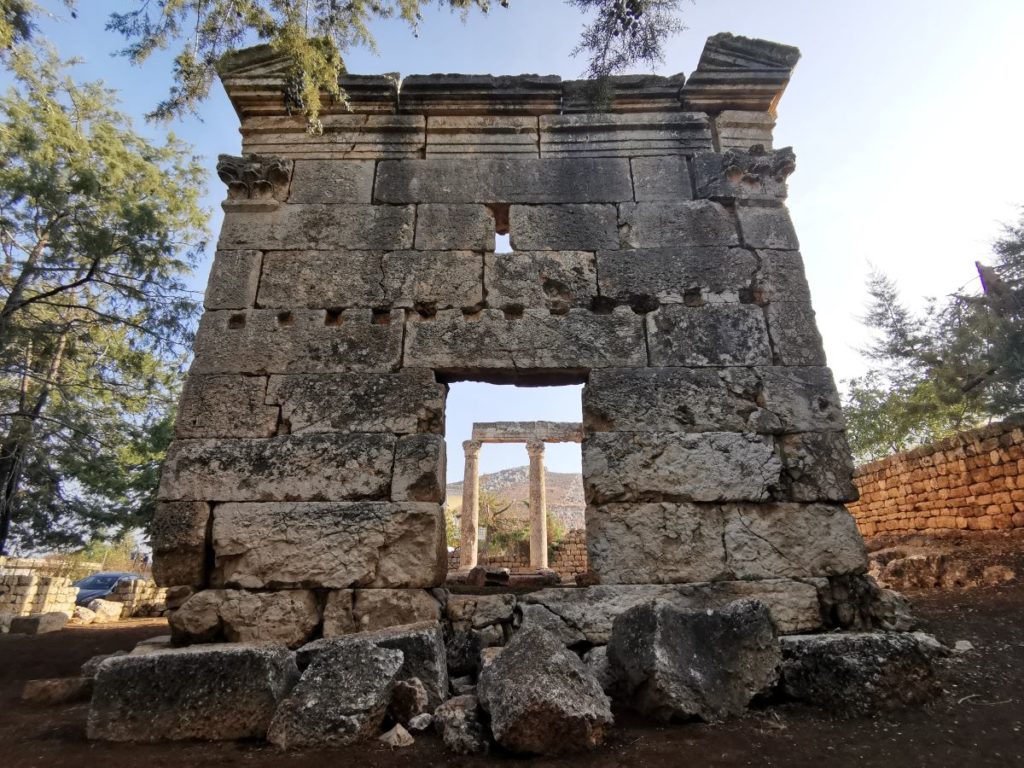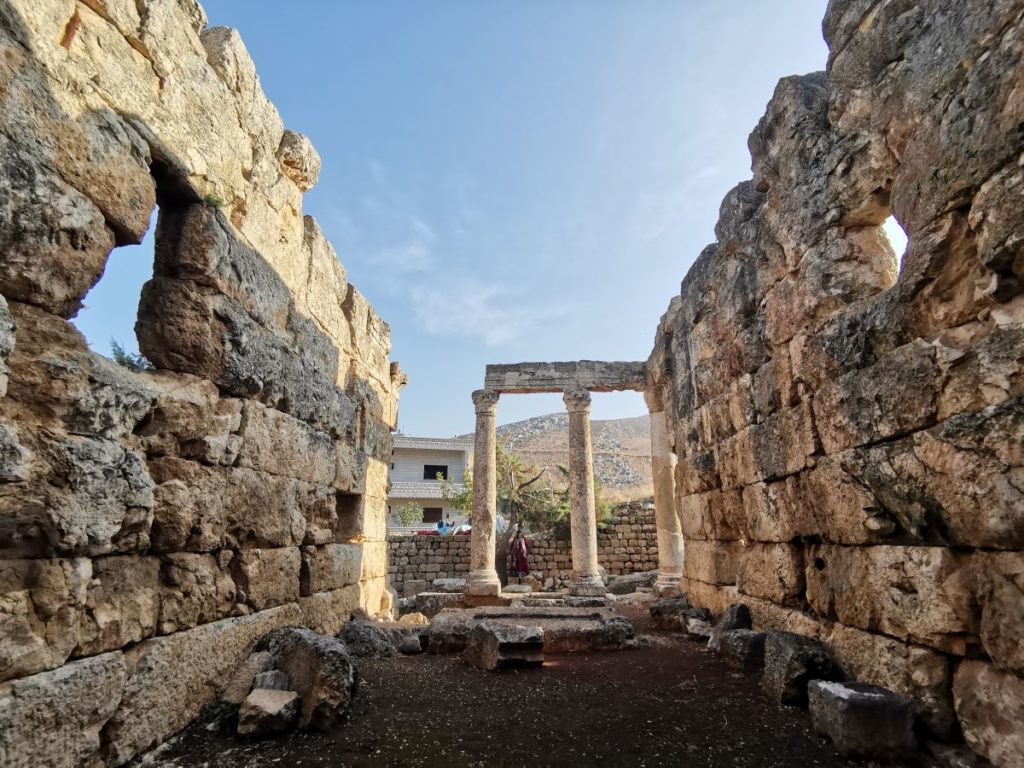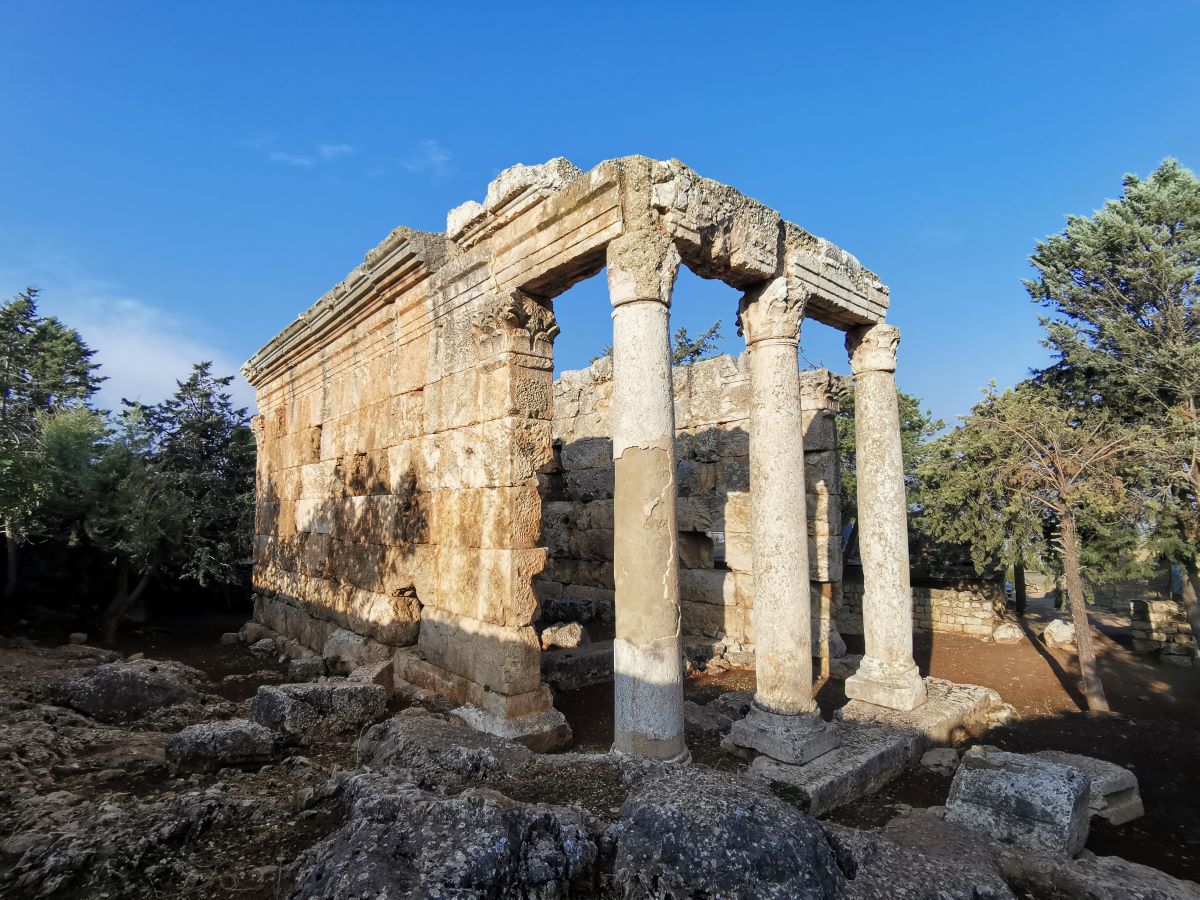The village of Dakoue houses a well preserved Roman-era temple, located on the eastern side of the village.
Toponym
According to local tales, Da-ko-ue derives from Semitic roots meaning “The holy place where the temple of the God used to stand, planting safety around, and attracting sacrifices and offerings”. However, the meaning of this designation is not concrete according to scholars.
Timeline
Neolithic period – Excavations uncovered numerous traces of habitation that date back to the Neolithic era.
1st century AD – 3rd century AD – Dakoue settlement became an important commercial hub thanks to its strategic location along the interconnected Bekaa-Syria trade routes. Consequently, a temple was erected.
4th century AD – 5th century AD – The temple is believed to have been converted to a Byzantine church.
No further records are clear about the history of the temple and the village for centuries to come.
Unknown Date – The structure is converted into a house and stable until it was finally restored in modern times.
Structure
The temple of Dakoue is well preserved compared to other structures located in the area. This preservation was made possible thanks to its transformation into a house and stable. It still retains the traces of its temenos (sacred enclosure), a central courtyard and a front colonnade composed of three columns, while the entrance wall of the temple has been dismantled.
The building rests on a modest foundation. It is a tetrastyle prostyle temple (temple with four columns at the front), of Corinthian order, open to the North-East, which includes a pronaos (space at the entrance) and a cella (inner chamber) at the bottom of which rose the platform of an adyton (sacred space where the diety is venerated).
The niche of the venerated deity can still be seen above the adyton platform.
The deity venerated at the temple is unknown since scholars couldn’t find any reliable inscription or relief that can give a concrete answer.
It is important to note that the hill right next to the temple houses several rock-carved tombs that date back to antiquity.
Karim Sokhn
Tour Operator & Tour Guide
References:
La vie Religieuse Au Liban Sous L’Empire Romain – Julien Aliquo
